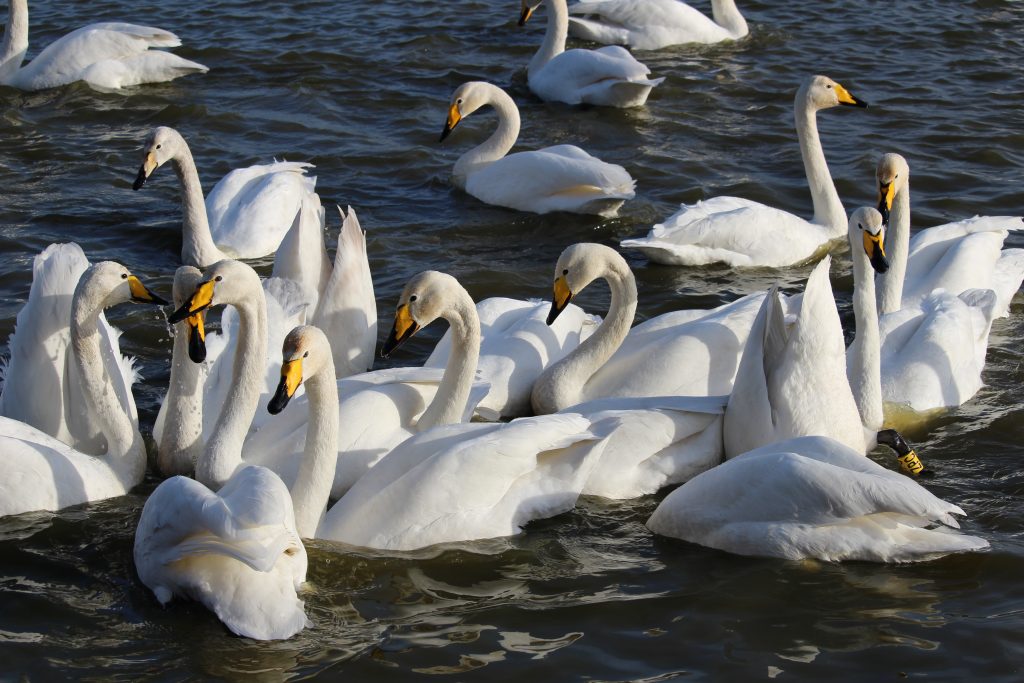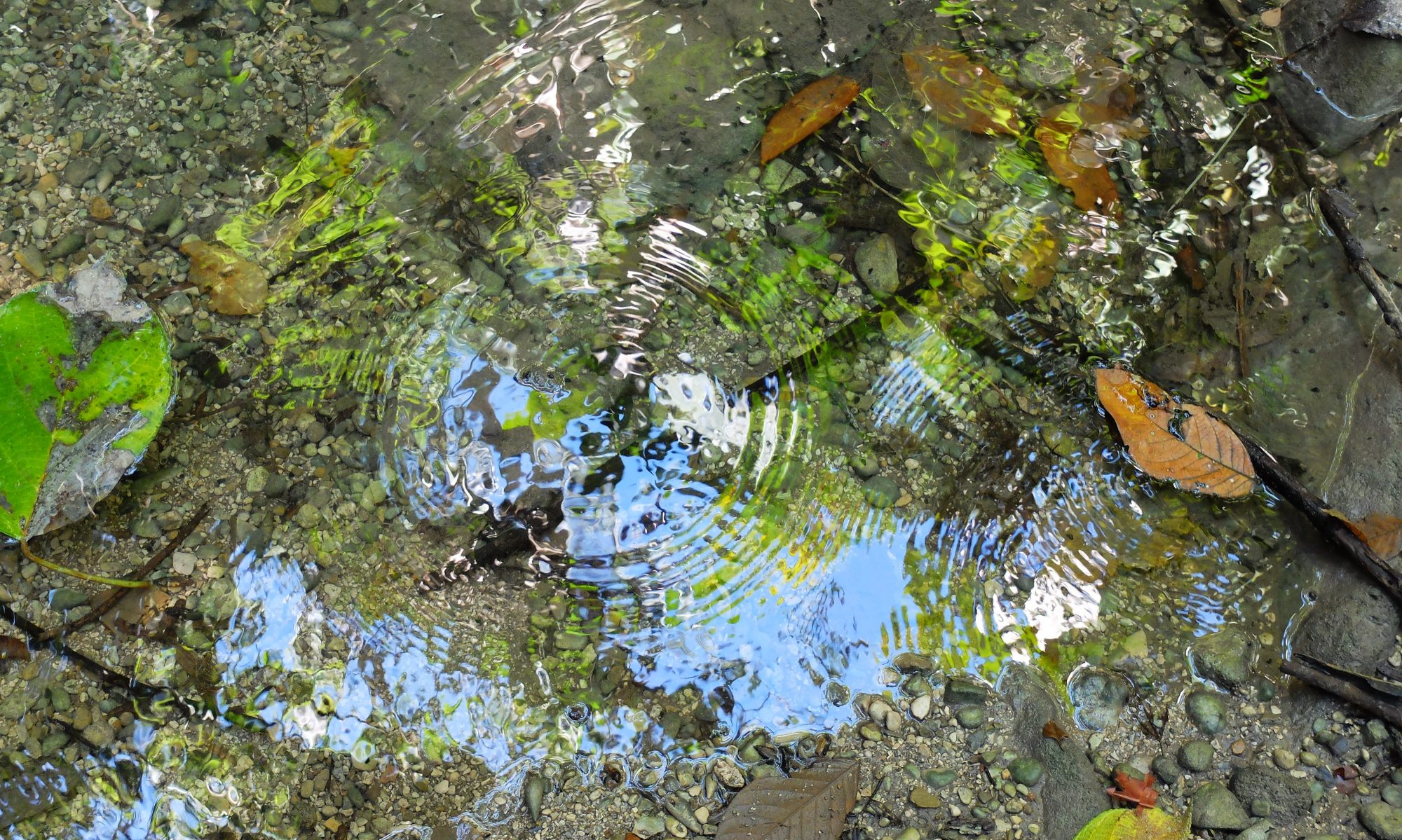Post by Prof Chris Spray
May 13th is World Migratory Bird Day (WBMD), or at least it is in the northern hemisphere; the southern celebrating it on 14th October, reflecting the cyclical nature of bird migration with opposite migration periods in the north and south. With a different focus each year, awareness raising, campaigning and action in 2023 centres on the topic of water and its importance for migratory birds, helping to identify key actions for protecting water resources and aquatic ecosystems.
For many migratory birds, aquatic ecosystems are a key part of their lives. They are places to rest and refuel during their long journeys, and over the years scientists have been able to identify global ‘population flyways’ that connect different patches of wetland habitats, each essential to the safe movement of millions of birds. Like a string of beads on a necklace, these coastal, estuarine and inland wetlands encompass the various habitats that are vital for feeding, drinking, or nesting. Each river, stream, loch, pond, marsh, fen and bog is part of a connected wholescape.
Globally, nearly 70% of wetlands have been lost since 1900, and they are still being destroyed three times faster than forests, with negative impacts on the well-being and livelihoods of many millions of people, as well as birds. WWF’s Deep Dive in to the State of Freshwaters, part of their Living Planet Report 2020 shows that human consumption of freshwater is increasing by 1% every year – in line with a growing population and increasing demand that comes with rising wealth – driving a 4% decline per year in the Living Planet Index for freshwater species.
Increasing human demand for water, especially abstraction for agriculture, as well as pollution, overharvesting, invasive species and changes to the physical regime of watercourses through diversions and dams are having a direct impact on the availability of fresh water and the conservation status of many migratory birds. These direct pressures on wetland habitats are driven by our prevailing human systems for food production, energy generation, urban and infrastructure development. And increasingly above all, by climate change.
The idea for a day to celebrate and raise awareness of bird migration started back in 1993, with organisations in the USA including US Fish and Wildlife Service, Smithsonian Migratory Bird Center and Cornell Laboratory of Ornithology initiating celebrations and encouraging bird festivals and education programmes. From these beginnings, the programme spread and World Migratory Bird Day itself came in to being in 2006, recognised by the Secretariat of the Agreement on the Conservation of African-Eurasian Migratory Waterbirds and the Convention on the Conservation of Migratory Species of Wild Animals. It was then formally expanded and relaunched globally in 2018, with major events to celebrate the day now organised twice a year, on the second Saturday in May and October.
The need to recognise and protect linked habitats for migratory species however is not new. Indeed, the Ramsar Convention on Wetlands is the oldest of all modern global intergovernmental environmental agreements of any sort. The treaty was negotiated in the 1960s by countries and non-governmental organizations concerned about increasing loss and degradation of wetland habitats for migratory waterbirds. Adopted in the Iranian city of Ramsar in 1971, it came into force in 1975. It focuses on the’ wise use of wetlands’ and in so doing stresses the interlinkage between human needs and those of waterfowl populations, and the need to maintain each wetland’s ‘ecological character, achieved through the implementation of ecosystem approaches, within the context of sustainable development”. Now some 50 years old, this foreshadowed modern-day thinking around ecosystem services, sustainable development and indeed the SDGs. As a Contracting Party, the UK has committed to work towards ‘wise use’ of all our designated wetlands, using national legislation, policies, plans, management actions and public education.
To return to World Migratory Bird Day, the UNESCO Centre here in Dundee is a great place to see, and indeed hear migration in action! Each September, I listen with anticipation for the sounds of whooper swans and skeins of pinkfeet geese from Iceland as the fly over in ‘V’ formation en route south for the winter. Many geese stay for a day, some much longer on the Tay estuary or Loch of Lintrathen (both Sites of Special Scientific Interest, the latter also the human water-supply reservoir for Dundee!) where they rest and roost overnight. Some 50 kms to the north lies Montrose Basin, a Scottish Wildlife Trust reserve and another ‘bead’ in this necklace of protected sites for this migratory species and home very briefly to up to 84,000 geese in the autumn migration (peak October 2020). Recognition of the importance of such habitats was further emphasised by the inclusion last month of ‘The East Atlantic Flyway’ among five new sites from across the UK in the government’s “Tentative List” of World heritage sites for recognition by UNESCO.

And spring is no different. I heard my first cuckoo of the year last week, my first swallows the week before and saw early migrants like sand martins and wheatears in late March. Even the common blackbirds or robins in your garden in winter may be continental migrants, species even as small as goldcrests (at 5 grams) regularly cross the North Sea to join us here in the UK. And along with these common migrants, we occasionally see ‘falls’ of migrants in early May, with thousands of small birds suddenly landing out of mist-covered skies on the Tayside and Fife coasts, often containing real rarities from southern Europe, temporarily lost on migration. For all these birds, the habitats where the stop en route are critical for their survival.
It was Aristotle, centuries ago who said ‘one swallow does not make Spring’ and this and many other literary references to bird migration are embedded in human culture world-wide. World Migratory Bird day is a chance to raise awareness and highlight the need for the conservation of migratory birds and their habitats.
https://www.worldmigratorybirdday.org/about
References:
- International treaties in nature conservation: a UK perspective. Stroud, D. A., Cromie, R., Finlayson, M., Lewis, M., Mundkur, T., Pritchard, D., Spray, C., Tasker, M., Tierney, R. & Wilson, J. 2021. Biodiversity Press, Totnes.
- A horizon scanning assessment of current and potential future threats to migratory shorebirds. Sutherland, W. J., Alves, J. A., Amano, T., Chang, C. H., Davidson, N. C., Finlayson, C. M., Gill, J. A., Gill, R. E., González, P. M., Gunnarsson, T. G., Kleijn, D., Spray, C. J., Székely, T. & Thompson, D. B. A., 2012, In: IBIS. 154, 4, p. 663-679 17 p
- Blood lead levels in wintering and moulting Icelandic whooper swans over two decades. O’Connell, M. M., Rees, E. C., Einarsson, O., Spray, C. J., Thorstensen, S. & O’Halloran, J., 2008, In: Journal of Zoology. 276, 1, p. 21-27 7 p
- Whooper Swan. Spray, C., 2007, The Birds of Scotland. R. W. Forrester & I. J. Andrews (eds.). the Scottish Ornithologists Club, Aberlady, East Lothian. p. 133-136 4 p.
- Comparative study of the breeding success of Whooper swans nesting in upland and lowland regions of Icelend. Rees, E. C., Black, J. M., Spray, C. J. & Thorisson, S., 1991, In: IBIS. 133, 4, p. 365-373 9 p
